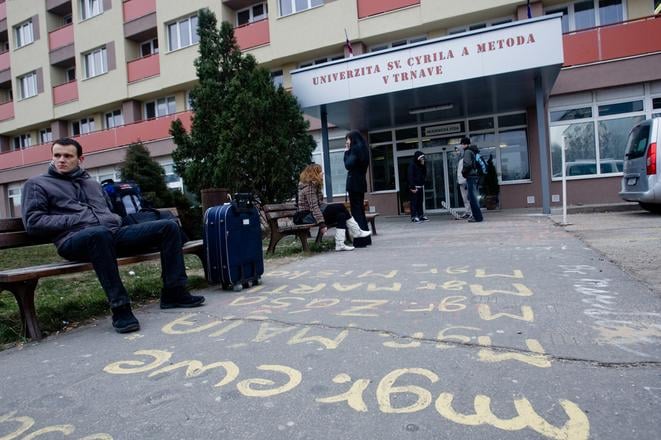The unemployment rate in Slovakia stood at 5.43 percent in June, up by 0.06 percentage points month-on-month and down by 1.47 p.p. year-on-year, said the Labour, Social Affairs and Family Centre (ÚPSVaR) on Friday, July 20.
Labour Minister Ján Richter ascribed the year-on-year growth in the unemployment rate in June to university graduates signing on at labour offices, pointing out that long-term unemployment posted a positive development, however.
“There are certain cycles that periodically repeat themselves every year,” said Richter, as cited by the TASR newswire. “Nobody should be surprised by university graduates registering themselves with labour offices in June, and the same thing happens with secondary school leavers in September. Therefore, some fluctuations are observable in June, but it's natural.”
A total of 8,369 university graduates signed on in June of last year, with 670 of them still on the registers this June.
“This means that 7,699 of them managed to find a place on the labour market,” said Richter. Labour offices have also monitored how many graduates have returned to the registers. “Half of the aforementioned 670 people managed to find a job, but failed to keep it.”
This year, 7,506 university graduates signed on.
“It’s important to us that many young people announced, when registering, that they’d already chosen an employer and will start work as of September,” said Richter.
Meanwhile, the trend of long-term unemployment is positive, stated Richter when 2,163 long-term unemployed were removed from job offices. He ascribed this chiefly to measures deployed within active labour market policy and projects offered by labour offices.
The jobless rate increased after almost three years
The unemployment rate in June of this year didn’t fall for the first time since September 2015, as there’s a lack of labour in some regions, and the labour market has some long-term problems, opines Lubomír Koršňák, analyst for UniCredit Bank Czech Republic and Slovakia.
The pace at which unemployment falls could thus slow down in the coming months.
“The growing economy should be able to continue to generate new jobs, however, especially in the west of the country, where there isn’t a supply of suitable labour,” said Koršňák. “But the economy is already starting to show signs of an approaching cyclical peak, so it can be expected that growth in demand for new employees will gradually slow down, which may further decelerate the decline in unemployment in regions where the labour supply is still sufficient.”
This could highlight the diversity of Slovakia’s labour market even further.
“Two parallel labour markets operate in principle: one in the west of the country struggling with a labour shortage, and the other in the east and in the south of central Slovakia, which in the coming months is more and more likely to suffer from a lack of labour,” said Koršňák.
As a result of the low mobility of part of the labour force, several businesses in western Slovakia will be increasingly dependent on importing labour from abroad or will be forced to reassess their plans for further expansion in this region.
Some numbers
The unemployment rate calculated from the total number of jobseekers reached 6.58 percent in June, with no change on a monthly basis and a decrease of 1.56 percentage points y-o-y. The total number of jobseekers reached 181,447 in June, going down by 47 individuals m-o-m and by 40,486 y-o-y.
In terms of individual regions, only the Banská Bystrica Region recorded a drop in the unemployment rate in June. As for districts, unemployment went down in 25 districts, while it increased in 54.
A total of 82,391 job vacancies were available to jobseekers in June, representing a m-o-m increase of 1,514. The highest number of jobs was available in the Bratislava Region, and the lowest in the Banská Bystrica Region.


